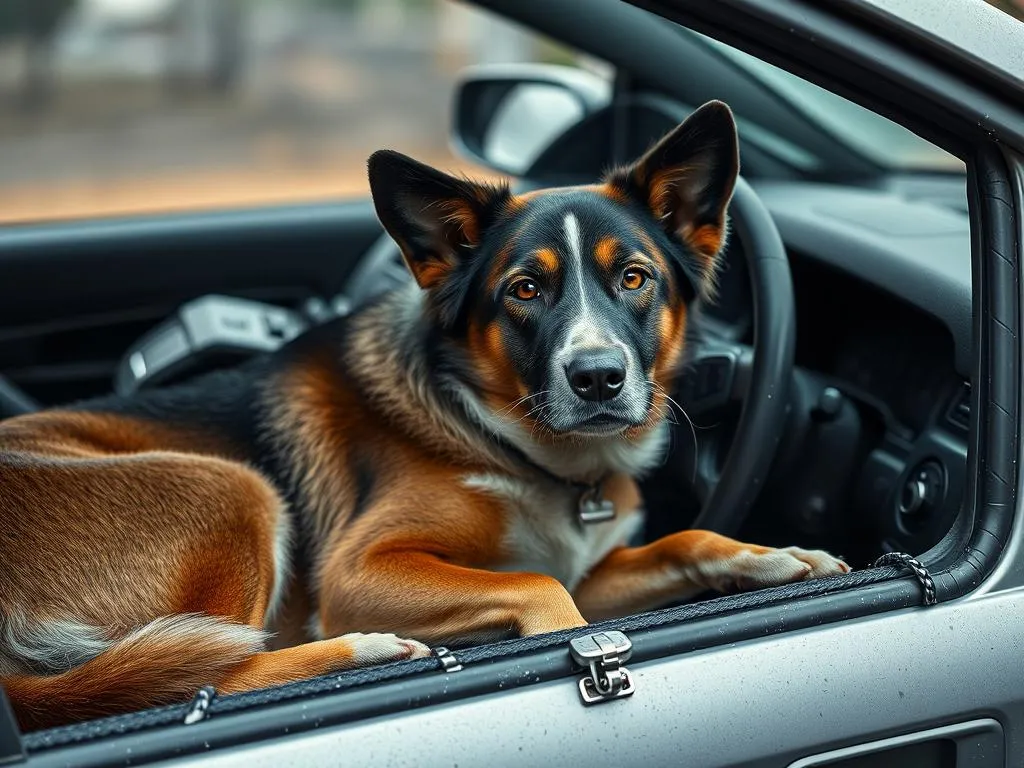
Every year, thousands of dogs die in car accidents, a heartbreaking statistic that highlights the need for greater awareness among pet owners. According to the American Society for the Prevention of Cruelty to Animals (ASPCA), an estimated 100,000 dogs are involved in car accidents annually in the United States alone. This number raises alarming questions about the safety measures we take when traveling with our furry friends and the potential consequences of negligence.
Understanding the magnitude of this issue is crucial for pet owners and the general public alike. This article delves into how many dogs die in car accidents, the causes behind these tragic events, their emotional and financial impact, and effective prevention strategies. We will also explore what to do if an accident occurs, ensuring that you are well-prepared should the unthinkable happen.
Understanding the Statistics
National Statistics on Dog Car Accidents
The statistics surrounding dog deaths in car accidents reveal a disturbing trend. According to the ASPCA and various veterinary studies, approximately 60% of dog owners do not restrain their pets while traveling. This lack of precaution contributes significantly to the estimated 100,000 dogs involved in accidents each year.
The Centers for Disease Control and Prevention (CDC) also reports that unrestrained dogs can become projectiles in a car during a collision, leading to severe injuries or fatalities. From minor scrapes to severe trauma, these accidents can have devastating outcomes for our beloved pets.
State-by-State Breakdown
Interestingly, the incidence of dog deaths in car accidents varies by state. For example, states with higher traffic volumes, such as California and Texas, often report more accidents involving dogs. Conversely, rural areas may see fewer accidents simply due to lower traffic density.
Geographical factors play a role as well. States prone to harsh weather conditions, like snow or heavy rain, may also report higher accident rates as road conditions become treacherous. Understanding these regional differences helps in identifying areas where increased awareness and prevention strategies are especially necessary.
Comparison with Other Causes of Dog Death
When putting the statistic of how many dogs die in car accidents into perspective, it’s helpful to compare it with other leading causes of dog deaths. The leading causes typically include illness, natural causes, and accidents at home. Car accidents rank relatively high among accidental deaths, yet they often receive less attention than other risks.
For instance, the risk of dogs contracting diseases or experiencing health issues due to inadequate veterinary care is significant. However, the immediate and visceral nature of an accident makes it critical to focus on prevention strategies for road safety.
Causes of Dog Deaths in Car Accidents
Common Scenarios Leading to Accidents
Several common scenarios lead to dog deaths in car accidents. One of the most alarming is dogs jumping out of moving cars. Many pet owners mistakenly believe their pets will remain calm and seated during the ride. However, sudden movements or distractions can prompt dogs to leap from the vehicle, leading to severe injuries or fatalities.
Another scenario involves dogs being left unattended in vehicles. On hot days, the inside of a parked car can reach dangerously high temperatures within minutes, leading to heatstroke and death. This lack of consideration for a pet’s well-being is a significant contributing factor to the fatalities we see each year.
Human Error and Negligence
Human error plays a considerable role in these tragic incidents. Distracted driving is a leading cause of accidents, and when a driver’s focus is divided, the risk to pets in the car escalates. Additionally, many pet owners fail to secure their dogs properly in vehicles. Without the use of restraints like seat belts or carriers, dogs can easily become hazardous to both themselves and others on the road.
Environmental Factors
Environmental factors also contribute to the risk of dog deaths in car accidents. Weather conditions such as rain, snow, or ice can make roads slippery and increase the likelihood of accidents. Moreover, the difference in urban versus rural accident rates can be striking. Urban areas often have more traffic and potential hazards, while rural areas may pose risks from loose livestock or wildlife.
Understanding these factors can help pet owners make informed decisions about traveling with their dogs, taking into consideration the conditions of both the road and the weather.
Impact of Dog Deaths in Car Accidents
Emotional Toll on Owners
The emotional impact of losing a dog in a car accident is profound. Many pet owners regard their dogs as family members, and the grief associated with such a loss can be overwhelming. Owners may experience feelings of guilt, anger, and sadness, leading to long-term psychological effects that complicate the grieving process.
Beyond the initial shock and grief, the loss of a pet can disrupt daily routines and emotional stability. Many owners find themselves struggling with the absence of their furry companions, which can lead to anxiety and depression.
Financial Consequences
The financial implications of losing a pet in a car accident can also be significant. Veterinary bills for treatment can be steep, especially if the accident results in severe injuries. Furthermore, the loss of companionship can lead to a sense of emptiness that some owners may attempt to fill with another pet, incurring additional costs.
In some cases, legal implications can arise from car accidents involving pets. If another driver is at fault, owners may face the challenge of navigating insurance claims, which can add to the financial burden during an already difficult time.
Prevention Strategies
Safe Travel Practices for Dogs
Preventing dog deaths in car accidents begins with implementing safe travel practices. Pet owners should invest in pet seat belts or carriers that are specifically designed for travel. These restraints can keep dogs secure and minimize their risk of injury during sudden stops or collisions.
Crate training is another effective method for ensuring a dog’s safety while in a vehicle. A well-trained dog will feel comfortable in a crate, and this familiarity can help reduce anxiety during travel.
Educating Pet Owners
Education is vital for promoting pet safety during travel. Pet owners should seek out resources that provide information on safe practices. The ASPCA and other animal welfare organizations offer guides and workshops that focus on pet safety, including tips for traveling with dogs.
Community initiatives can also play a significant role in spreading awareness about this issue. Local organizations can host events or distribute literature that informs pet owners about the importance of securing dogs in vehicles.
Legislative Measures
Advocating for legislative measures can further enhance pet safety during travel. Many states have laws regarding pet transportation, but enforcement and awareness can vary. Stricter regulations on how pets should be secured in vehicles can help reduce accidents and fatalities.
Pet owners should stay informed about local laws and advocate for changes that prioritize animal safety. Collective efforts can lead to enhanced protection for pets on the road.
What to Do If an Accident Occurs
Immediate Steps to Take
If an accident occurs, it’s crucial to act quickly and calmly. First, assess the situation. Check for injuries to both yourself and your pet. If your dog is injured, providing first aid can be life-saving. Clean any wounds and keep your dog calm until help arrives.
Contact veterinary services immediately if your dog requires medical attention. The sooner you get your pet to a professional, the better their chances of recovery.
Legal Considerations
Following an accident, it’s important to understand your legal obligations. Report the incident to local authorities if necessary, especially if there are injuries or damages. Knowing your rights and responsibilities can alleviate some of the stress that comes with an accident.
Coping with Loss
Coping with the loss of a pet is incredibly challenging. Many pet owners find solace in support groups or counseling services designed to help those grieving the loss of an animal. Talking to others who understand the bond between pets and their owners can provide comfort during this difficult time.
Resources are available to help navigate the emotions associated with losing a pet, and seeking support can be a critical step in the healing process.
Conclusion
Understanding how many dogs die in car accidents is vital for every pet owner. The statistics are alarming, but by recognizing the causes and implementing prevention strategies, we can mitigate risks and keep our furry companions safe.
From securing our pets with proper restraints to advocating for legislative changes, every action counts. The emotional and financial implications of losing a pet are significant, making it crucial for pet owners to prioritize safety while traveling.
In the end, being a responsible pet owner means taking proactive steps to ensure that our beloved dogs remain safe on the road. Together, we can work towards reducing the number of accidents and fatalities, ensuring that our pets enjoy every journey with us, safely and securely.









